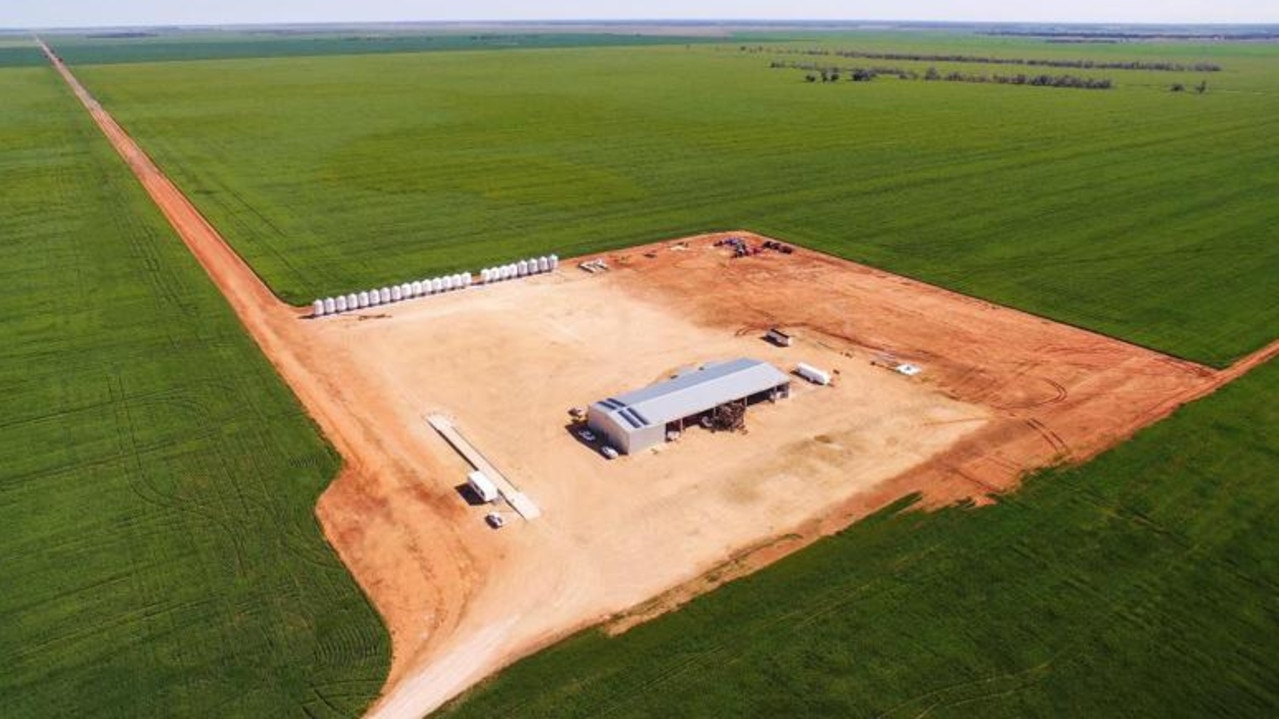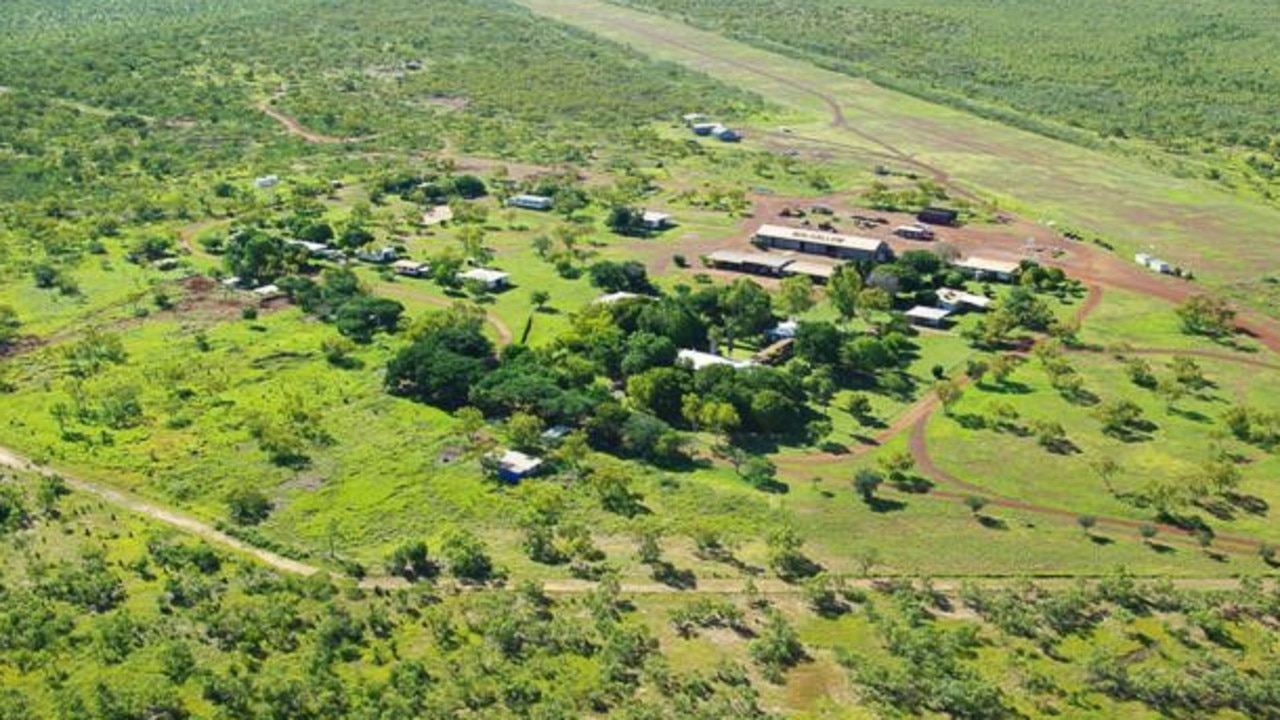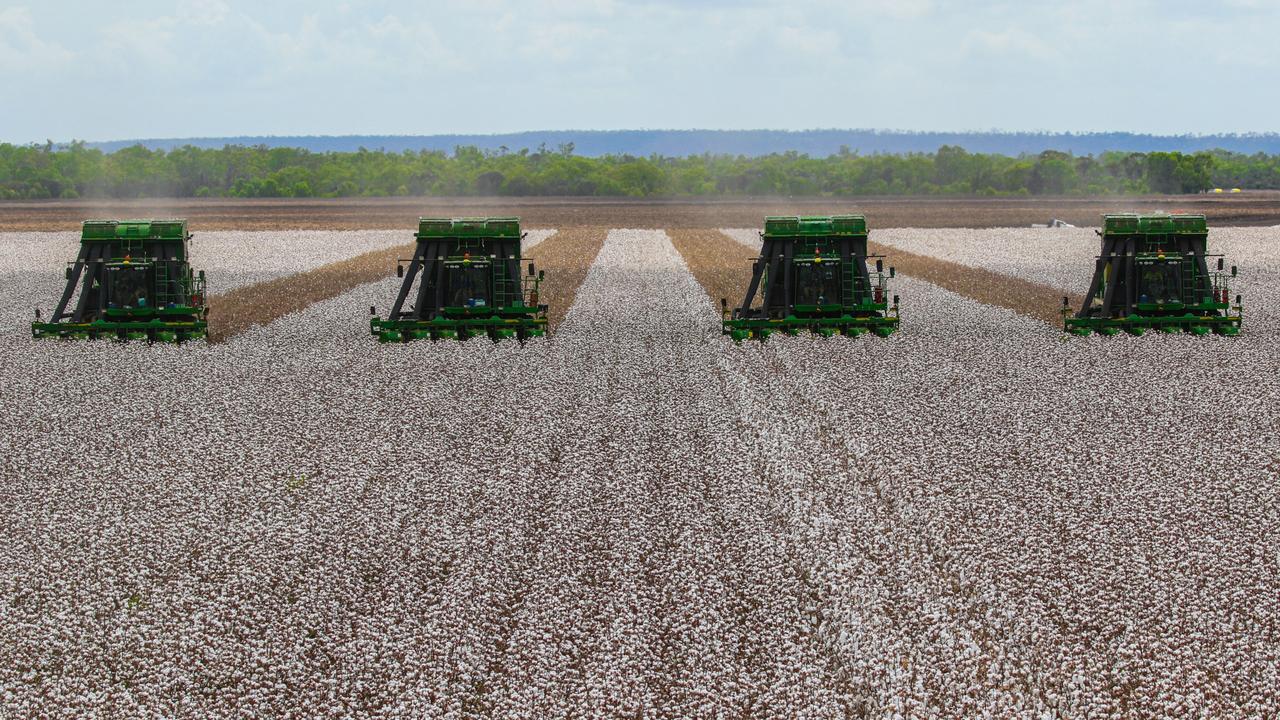Golden harvest as value of farms, crops rise
Billionaires, renowned rural families and investment funds all wanted a slice of the agricultural sector, which is expected to power on in 2022. See what’s on the market.

Business
Don't miss out on the headlines from Business. Followed categories will be added to My News.
A huge rise in land values and commodity prices over the past year is expected to drive buyer interest in some of the country’s prime rural properties in 2022.
Beef and grains sectors were the star performers in 2021 and the favourable seasonal conditions and low interest rates which underpinned last year’s boom are expected to continue.
Big name Australian investors were among the major buyers in a record sales year for the rural sector that saw a weakening in offshore ownership over vast tracts of the country.
Colliers International head of Agribusiness Rawdon Briggs said the economic outlook was the strongest he has seen for the segments of agriculture which were not overexposed to Chinese trade term changes.
“Given that nothing changes in relation to domestic debt providers if they continue to lend under the same criteria, I can see the market growing by 15 per cent in value in 2022,” he said.
Some of the properties the industry expects to find new owners for in 2022 are the Walhallow and Amungee Mungee stations near Daly Waters in the Northern Territory (1.32 million hectares). The stations have a $230m price tag and are owned by billionaire Brett Blundy in partnership with Adrian and Emma Brown.

Others set to sell are the Cowal Agriculture aggregation in Emerald, Queensland (5976ha) for $120m; and Yarrabee Park at Morundah in New South Wales (11,260ha) for $60m while the massive Apache Agriculture portfolio at Newdegate in Western Australia (45,057ha) is expected to go through as an expressions of interest campaign.

There are also expectations that the 331ha prawn processing farm, Pacific Reef Fisheries, at Alva Beach near Townsville, could go under the hammer in 2022.
However, Mr Briggs said he expects less listings to hit the market in 2022 than last year.
“While it will get tighter with listings … where you (will) see a flurry of activity is in the cotton and grain sectors which will have a bigger uptick in listing activity over cattle,” he said.
“Cotton is well on its way to a boom run based on prices and also activity given that there is water in every dam in the Upper Murray River.”
Last year some of the country’s top landowners, including richlisters Gina Rinehart, Andrew Forrest, Canberra Airport owner Terry Snow and UK-based Australian billionaire Sir Michael Hintze bought and sold amid the best agricultural conditions seen in decades which will generate a record $78bn in agricultural production in 2021/22.
Renown rural names also took part in the property muster like the Menegazzo, Roberts-Thomson, MacLachlan and Hughes families who took advantage of the good years to either buy or sell.
In a new trend, rural landowners are banding together to form syndications and fund managers are continuing to make their presence felt. Centuria Capital, which has merged with noted rural investor Primewest, last year bought a high-yielding vegetable-growing glasshouse in Victoria’s West Gippsland region.
Mr Briggs said the “spectacular” rise in agribusiness property values nationally confirmed that they were a true stand-alone asset class.
“In some cases over the past three to four years prices for large rural properties have doubled if not tripled,” he said.
“In the overall property market the only sector that would have outperformed farmland over the past 12 months would have probably been industrial logistics.”
Last year the biggest deal was the $600m sale of the 105,000ha Lawson Grains Portfolio of more than 70 properties in New South Wales and Western Australia to Sydney-based global forestry investment manager New Forests backed by Canada’s Alberta Investment Management Corporation.

That was followed by the $500m plus sale of pioneering cotton farming and ginning business, Auscott Ltd based in Warren, NSW, which was bought by NSW family farming company Australian Food and Fibre backed by one of Canada’s largest pension funds PSP Investments.
Mr Briggs said Australian buyers were in the market in 2021 more than their offshore counterparts and the trend should continue.
“It’s more and more swinging back to domestic buyers including syndicators and funds while offshore owners were net sellers, no doubt about it,” he said.
“A large part of that was because domestic buyers have access to low interest loans combined with commodity prices.
“If you go into a bank and you are in the beef cattle or grains business — and I’m seeing grain prices at numbers I’ve never seen — a loan is very easy to justify given the prices to buy into the market at the moment are at a premium and still make it work.
“While there’s still a 200 to 300 basis points spread on what you’re going to achieve on these assets compared to your cost of debt, so the question is: Why wouldn’t you buy?”
The only sour note last year was the impact of the Covid-19 pandemic on international flights which hurt the aquaculture sector and the lack of backpackers ensured a dearth of workers for the horticultural industry.
In line with the building industry materials costs rose, while the impact of China’s trade coercion with bans and tariffs had a negative impact on the Australian wine industry and will lead to an uncertain 2022.
However, beef and grains were largely shielded by higher commodity prices and new export markets,
Mr Briggs said a new major attraction for investors to the large rural properties in the future will be agriculture’s role in carbon abatement.
Last year Sydney funds management veteran Tim Samway, the executive chairman of Hyperion Asset Management, secured the backing of Mr Snow, for a new agricultural investment fund that hoped to raise $1.5bn over five years to drive the creation of a 2 million-hectare cattle grazing and carbon sequestration portfolio.
Their Packhorse Pastoral closed its first capital raising of $62.5m in July and acquired its seed asset, 8360ha Stuart’s Creek near Roma in western Queensland, for $27m with the aim of improving the property to enable the return of carbon to the soil, and give the property the potential to one day generate carbon credits.
“Agribusiness and forestry assets are one of the few asset classes that can provide a full and final mitigation of Scope 3 carbon emissions to the wider global business community,” Mr Briggs said.
“While these vast areas of land have not been recognised as carbon sinks, they will be recognised in 2022. They will be the next growth driver in land value with its ability to add value to the existing ‘ag’ operations though a third income stream.”
Originally published as Golden harvest as value of farms, crops rise








